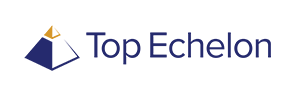As we discussed in our previous blog post, there are two types of basic search engine optimization (SEO)—“on-page” and “off-page.” In this post, I’d like to delve into the seven individual components of “on-page” SEO, what they are, and how they’re used.
1. Page Titles
Page titles are one of the most important basic SEO factors. Page titles are the text you see at the top of your browser window when viewing a Web page. They are also the title of the page that is presented in search engines.
Page titles can be found and edited in your site’s HTML. The text that is surrounded with the <title> tag is your page’s title. The following are guidelines for devising good page titles:
- Include keywords that are relevant to your business. Think along the lines of someone searching for your service using a search engine (like Google). Think of the words that get to the core of your service.
- Make your page titles less than 70 characters long. Longer page titles will not be seen in your Web browser or in Google search results. Also, if you make your page title too long, it will dilute the importance of the keywords included.
- Put the best keywords as close to the beginning of the title as possible.
- Make it readable and understandable for job seekers and clients. It needs to make sense.
- Put your company name at the end of the page title. This will link the keywords to your company name in visitors’ minds.
- Use different page titles for each page within your website. Why? Because each page is an opportunity to target different keywords and the page titles should be consistent with the content on the page.
2. Meta Descriptions
The meta description is the text seen as the description of a site (or page within that site) in a Google search. These words attract a searcher’s attention and indicate if a search result is relevant or not. It’s a recommended practice to include important keywords in your meta descriptions.
3. Headings
If a piece of text appears bigger or more prominent than the other text on a page, it’s probably part of a heading. You can verify this by checking the HTML code of your website, and seeing if the text has a <h1>, <h2>, or <h3> tag surrounding it. Text in the headings is more likely to be read by search engines as keywords than text in the rest of the page.
To get a better ranking in search engines, make sure that the web page headings contain all (or the most important) keywords that are relevant for that page or the paragraph below the heading. If the same keywords are repeated in the paragraph following the heading, the page will receive a boost in ranking.
4. Images and Pictures
Images on a Web page can definitely enhance the user experience. However, when using images and pictures, please keep the following in mind:
- Don’t use images excessively. More pictures mean that your page takes longer to load, which has a negative impact on the user experience and overall SEO.
- Associate text with pictures. Search engines do not “read” images; they only read text. If you add pictures, make sure they contain ALT text, which is an HTML attribute that can be added to pictures so the search engines replace those images with the associated text.
- Include keywords in your image file name. This will help draw in relevant traffic from image searches. Make sure to separate the different keywords in the file name with a dash (-).
5. Domain Information
Search engine rankings favor sites that are registered for a longer period of time. Longer domain registration periods indicate a commitment to the site, which also indicates that it’s less likely to be a spammer site. Therefore, extend your website registration for a very small fee each year to receive an SEO boost.
6. URL Structure
The URL of a Web page is its Web address. For example, Top Echelon’s Big Biller Recruiting software URL is https://www.topechelon.com/recruiting-software/. The URL structure of a website is about how the different URLs connect with each other.
Unfortunately, improving your site’s URL structure is one of the more difficult aspects of on-page website optimization. The methods of fixing these issues depend entirely on the back-end parts of your website, such as your content management system or programming framework.
(330) 455-1433, Ext. 198
JFye@TopEchelon.com
— — —
(Hiring Hook provides website solutions for recruiting and staffing firms. With Hiring Hook, you can post jobs to your firm’s website and you also have the option of posting them to LinkedIn, Facebook, and Twitter to attract qualified candidates.)
Receive a FREE evaluation of your recruiting or staffing firm’s website!
View Hiring Hook examples and a portfolio of our design work.
Read testimonials from current Web Design customers.

Leave a Comment..